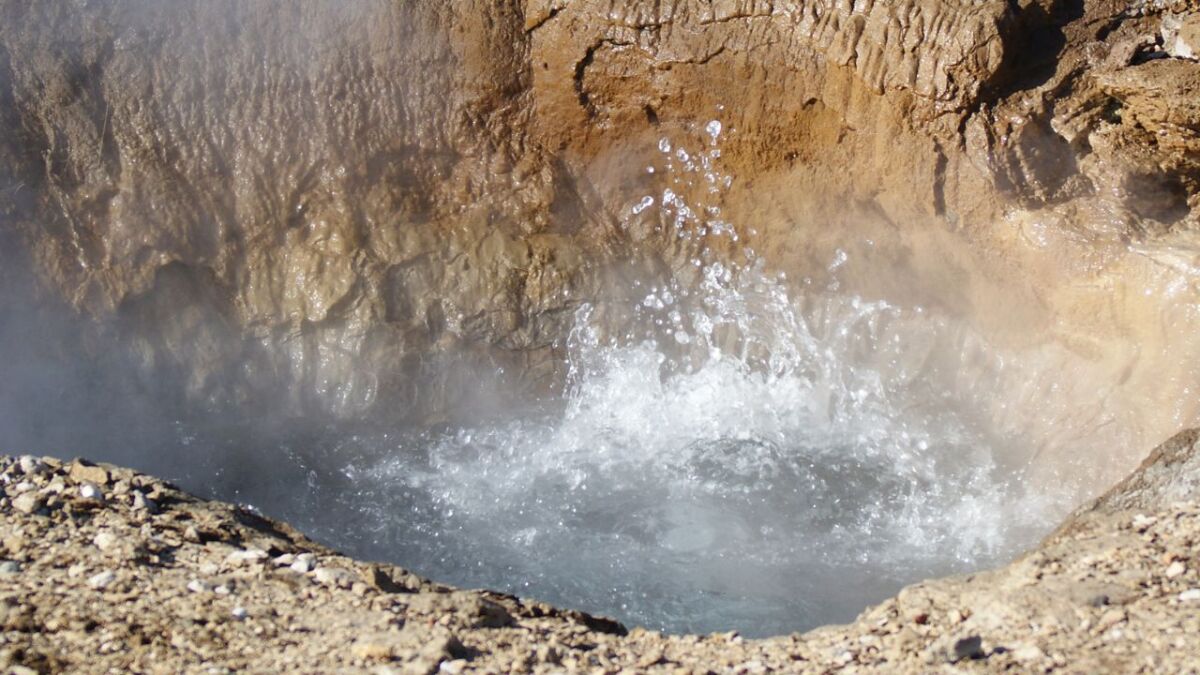
Boiling water without a pot These 8 methods will help you get drinkable water
👉 The key facts from this guide
- Water can be boiled in a self-carved or fired wooden bowl by placing hot stones inside.
- A large non-toxic leaf can be folded into a bowl shape and positioned over the fire to heat water in it.
- A hole in the ground, lined with impermeable material such as a rescue blanket or wet clay, can serve as a container for boiling water.
- Water can be boiled in a plastic bottle if it is positioned correctly and does not get too hot.
- A container made of birchbark or spruce bark can be made and used with hot stones to boil water.
- A piece of bamboo can serve as a pot to heat water in.
- A container made of animal skin can be used to boil water if the skin is adequately cleaned and disinfected.
Water is essential for your survival, I don't need to tell you that.
That's why it's so important to be prepared for all eventualities to get fresh drinking water.
If you've already identified a water source, the first, and most significant, step is done.
However, in most cases, you should boil your water to kill parasites, viruses, and bacteria.
In addition, you need boiling water to cook your food.
No problem if you have a pot with you.
But now the question arises: What happens if I lose my pot or don't even have one in the first place?
At first glance, the wilderness doesn't offer fireproof and waterproof containers that you can use for cooking.
But with some creativity and work, you can boil water without a pot.
How to do this and which methods are suitable for your situation, you will learn in this guide.
How can I boil water without a pot?
Here's the short answer:
Water can be boiled without a pot by heating it either through an improvised pot or hot stones in another container. Leaves or plastic bottles can be placed directly on the fire, while hot stones can be put into a wooden, bark, or bamboo container, a clay pot, or a hole in the ground.
We'll take a closer look at these methods below.
Oh, and if you prefer podcasts: This guide is also available as a podcast episode.
1. Carving or burning a wooden bowl to boil water
One of the most elaborate, but also the simplest, methods is to create a wooden container.
If you are skilled with a knife, you can carve your bowl out of a piece of wood.
If you don't have a suitable knife, or you're not yet skilled with one, simply burn the bowl into shape.
To achieve this, fill a hot ember (yes, you need a fire for this) onto your log and position it so that it only burns in the middle.
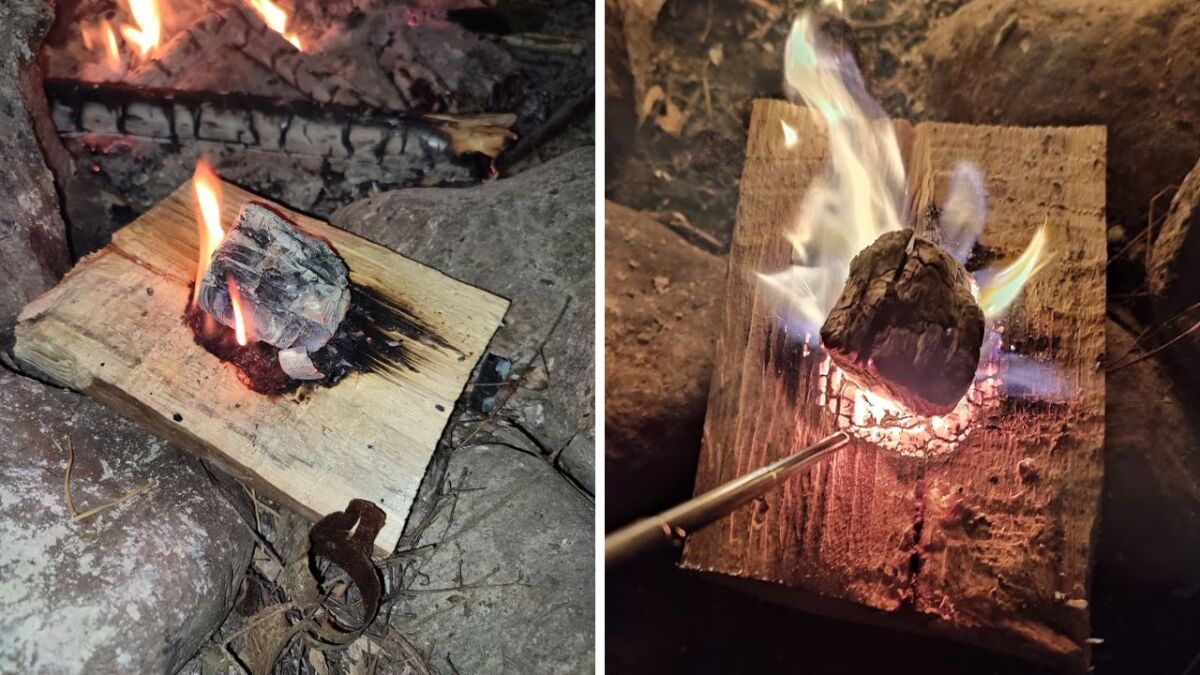
Now some skill is required. You have to keep the airflow going by blowing and burning the hole into shape. It sounds complicated at first, but it's effortless after a few tries and some time.
It's important to use soft wood for this. Ideally poplar, lime, willow, pine, or spruce.
Once you have finished your bowl, you can use it to boil water.
Logically, the bowl will burn if you put it directly into the fire. Therefore, you need to use stones that you heat up in the fire.
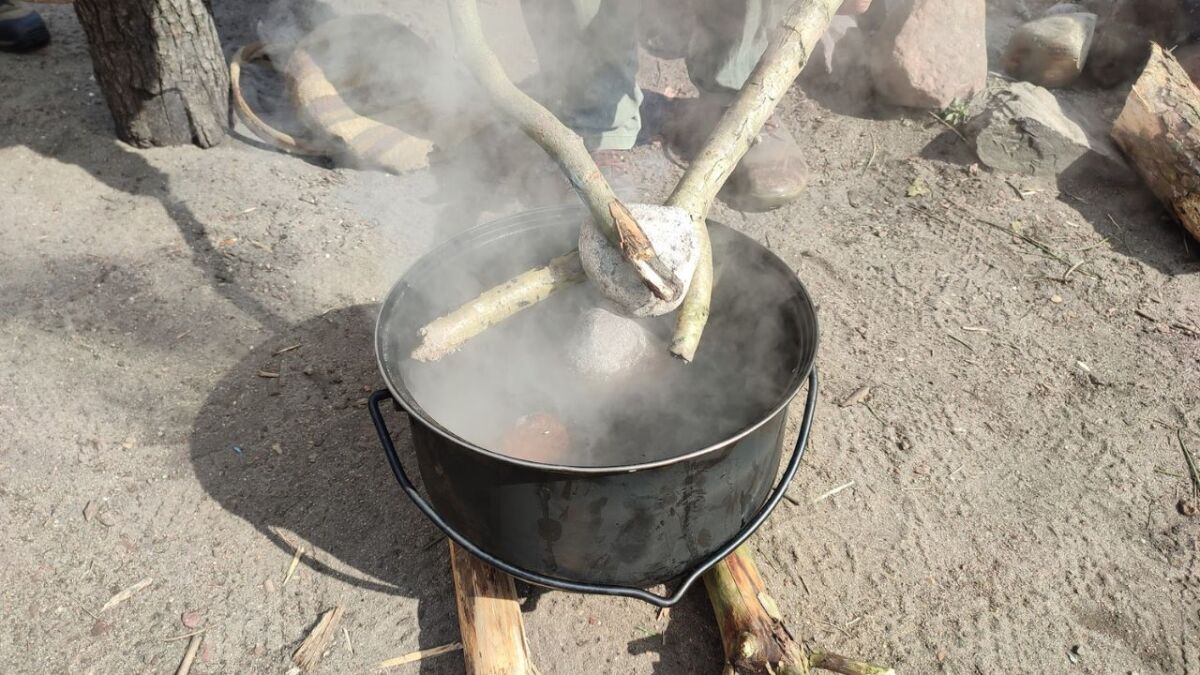
Make sure not to use wet stones. They can explode and send debris in your direction.
While you heat the stones, fill your bowl with water and then place the hot stones in it.
Alternate the stones until the water boils or until you have cooked your food.
And don't worry about the murky water: it's just sediment from coal and some dirt from rocks. It may not look appetizing, but it's safe to drink. Ideally, you should use a self-built water filter afterward.
2. A leaf bowl to boil water
This method requires some plant knowledge, as you need a non-toxic plant with large leaves.
In tropical or Mediterranean areas, the banana plant is ideal. In Germany, the search can be more difficult depending on the season.
Off the top of my head, maple leaves or the leaves of the greater burdock come to mind. The leaves are usually larger in the later months of the year.
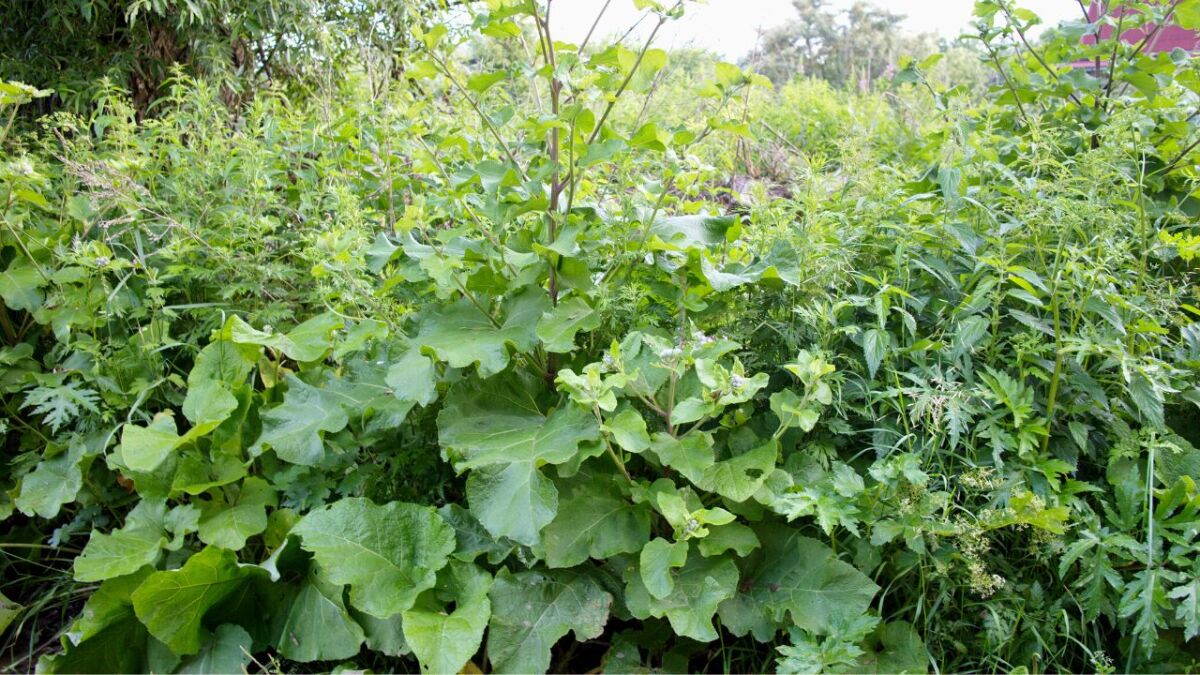
Although the leaves here are nowhere near as large as the leaves of a banana plant, it's a valid option if you're in dire need of water.
Once you've found a suitable leaf, fold it into a bowl. Then fill it with water and position it over your fire.
The fire should only minimally touch the leaf, and ideally, your hand should not be directly on the leaf either.
You could even build a holder for the leaf using a stick. Experiment a bit with the distance to the fire. After a little while, the water in the leaf will also begin to boil.
Read also
The Ultimate Survival Checklist: These 7 Things You Need on a Desert Island – Discover the 7 indispensable pieces of equipment for a desert island. With our ultimate survival checklist and tips, you’ll be well-prepared.
3. A Hole in the Ground to Boil Water
The hole in the ground is one of the most primitive methods for boiling water.
To achieve this, you first need a hole in the ground, which you line with impermeable material. This can be a rescue blanket, but wet clay (even better if it’s pure clay) works well too.
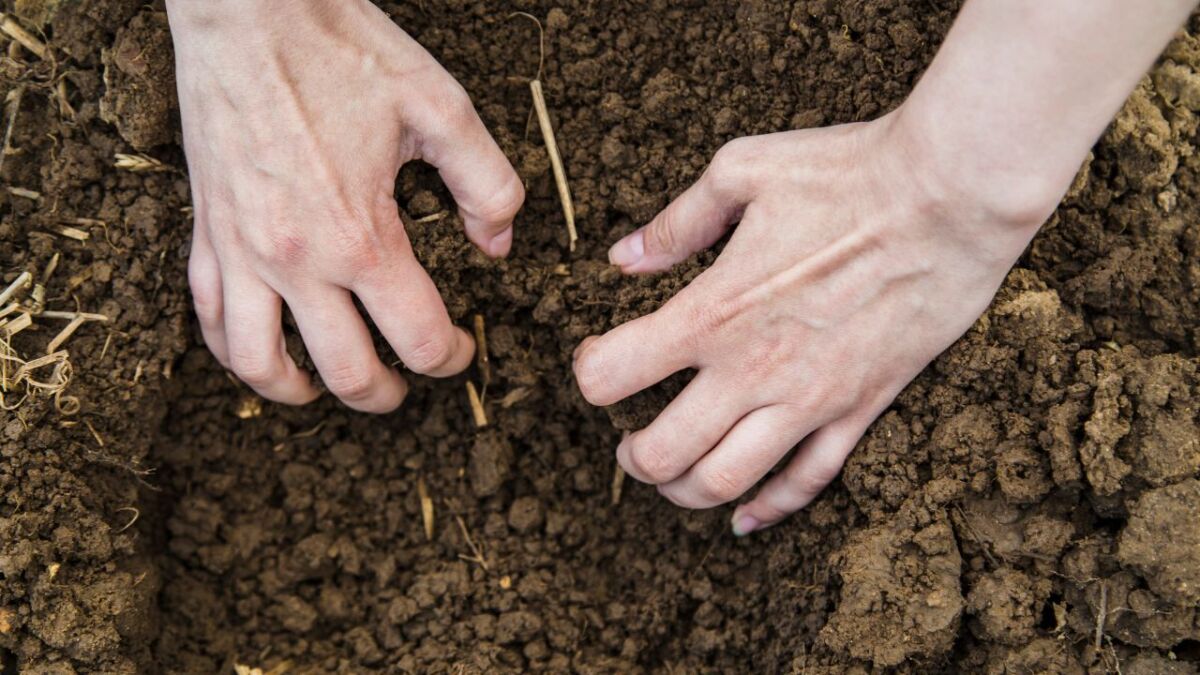
The rescue blanket is self-explanatory, but I’ll explain more about the clay here.
You can find clay almost everywhere in Germany, unless you are in the mountains.
To complete this, simply dig some up and collect the brownish mass. Now moisten it and spread it evenly in your pit.
Smooth it well so that the water doesn't seep out.
Now pour in some water and then add hot stones.
Depending on the size, you may need to change the stones until the water boils or your food is cooked.
Lies auch
Wie du Lehm findest, ihn aufbereitest und wäschst, damit du töpfern kannst – Entdecke im Ratgeber, an welchen Orten du Lehm findest. Lerne, wie du den Lehm durch Einweichen, Sieben und Sedimentieren reinigst, um damit zu töpfern.
But isn't the water dirty, then?
Yes, that's right. The water will contain some sediment, and it definitely won't be clear.
BUT it’s 100 times better to drink water with some dirt in it than water that hasn't been boiled. Your body can easily filter out and excrete the dirt.
If you have a water filter, you can still filter it. However, be aware that when filtering after boiling, the water could be contaminated again.
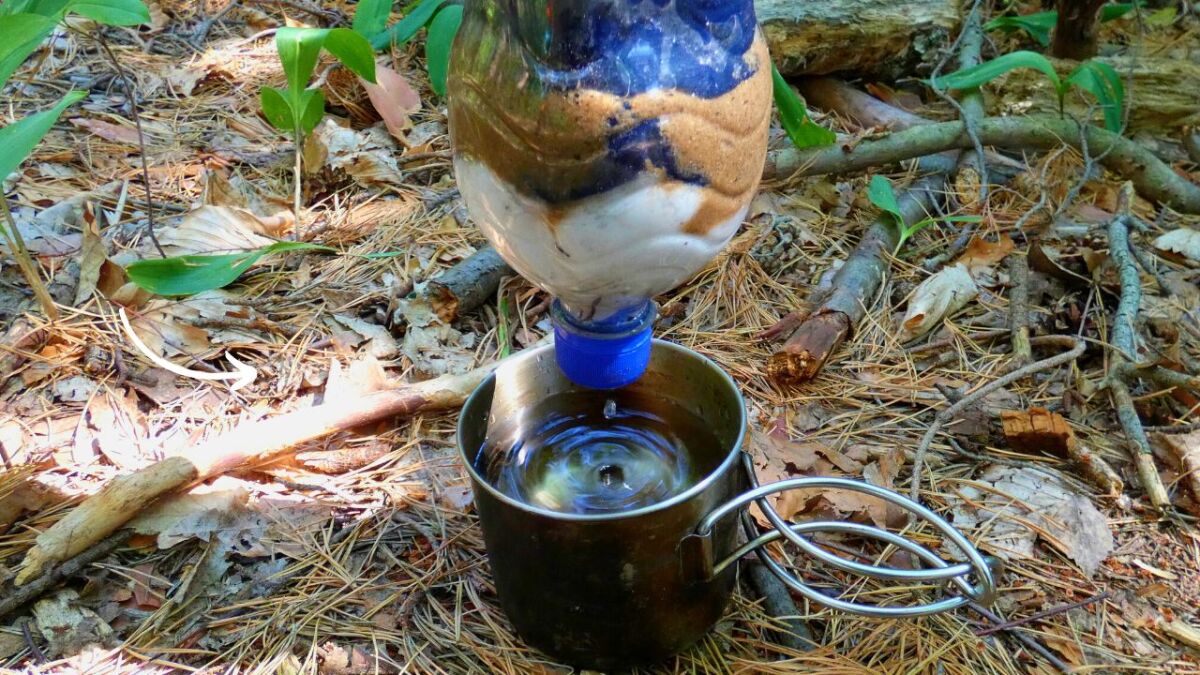
4. A plastic bottle to boil water
I do not recommend using this method permanently, but find it noteworthy and extremely useful in case of an emergency.
You may be wondering if plastic simply melts, right?
A valid question, but it depends on the distance and whether there is water everywhere, just like with the leaf bowl.
Plastic melts at 255 degrees and water boils at 100 degrees. With the right distance, you can bring the water to a boil without ending up with a melted bottle.
However, I generally advise against heating plastic and taking in the heated water, as plastic particles can always be released.
I still mention the method because plastic particles are still better than dying of thirst.
Read also
Boiling water in PET bottles - Does that really work? – Can you boil water in PET bottles to obtain sterilized drinking water in a survival situation? What do you need to consider, ensuring it is safe?
5. Boiling water in a stone bowl
This method requires a bit of luck! You first need a stone with a groove.
You can fill it with water and place the stone near the fire to bring the water to a boil. Be careful with your choice of stones.
Alternatively, you can also put hot stones in there again to bring the water to a boil.
If the stone cannot be moved, you will have to light and maintain your fire right there.
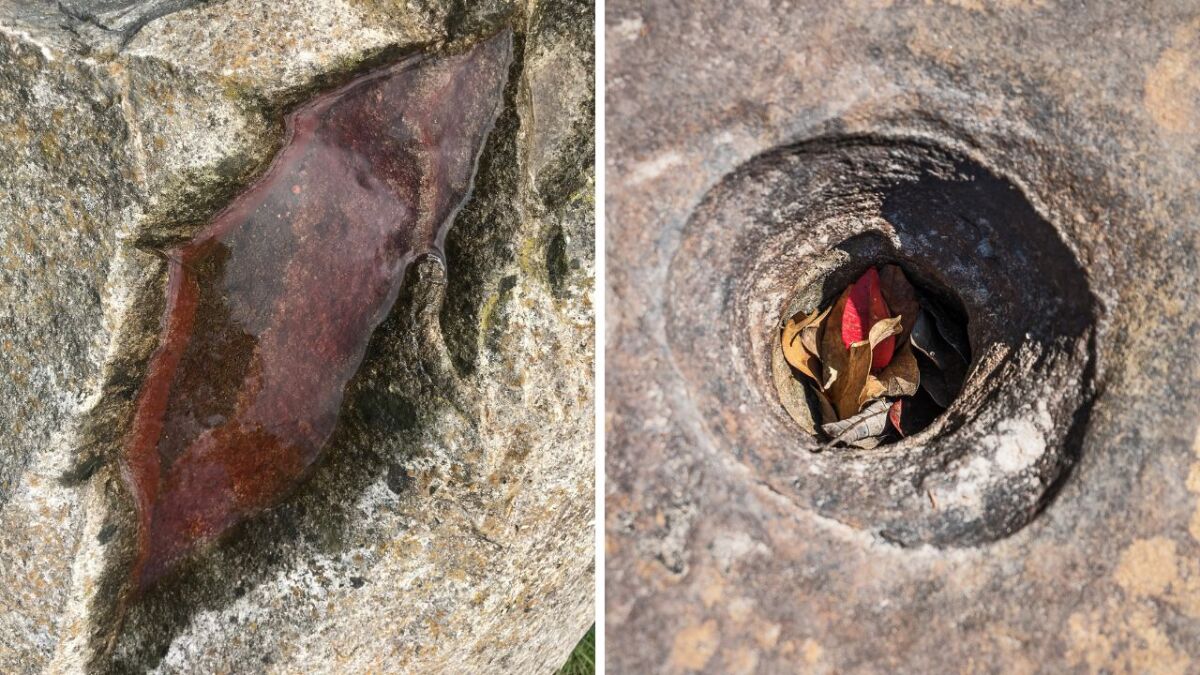
6. Building a container out of birchbark or spruce bark to boil water
If you want to unleash your creativity and manual skills, you can create a container from birchbark or spruce bark. The bark holds water very well, and you can also weave additional branches for stability.
First, you will need a solid, rectangular piece of birch or spruce bark without any holes.
Since birchbark or fresh spruce bark is stretchy, you can shape a wonderful container out of it.
You cut a short cut parallel to the long side on both sides. Then you can pull the resulting flaps over each other to form a bowl.
You can fix the overlapping ends with a small piece of branch, which you cut in lengthwise and which functions as a type of clip. You can stabilize the structure with cords.
Furthermore, you can now fill the container with water and place it next to your fire to heat up the water, or you can place hot stones inside.
7. The bamboo pot for boiling water
Here, too, the prerequisite is the presence of a specific resource. In this case: bamboo.
You will not find bamboo in Germany, but this tip is helpful if you are traveling in other regions.
Because bamboo is divided into chambers, it provides the perfect water container. Cut off a piece of bamboo and cut an opening on one side.
Fill your bamboo with water and place it near your fire. It's best to heat the water from the side, as the bamboo is more stable there.
8. Boil water with animal hide
In case you are hunting or even have an animal hide with you:
Animal hide is also waterproof and can therefore be used as a water container. To accomplish this, you need to sew the sides together or otherwise ensure that a container is created.
You can secure it with a string or rope and then position it over the fire. It is important to clean the skin thoroughly. Therefore, it is better to scrape off the fat residues and disinfect the inside at the fire.
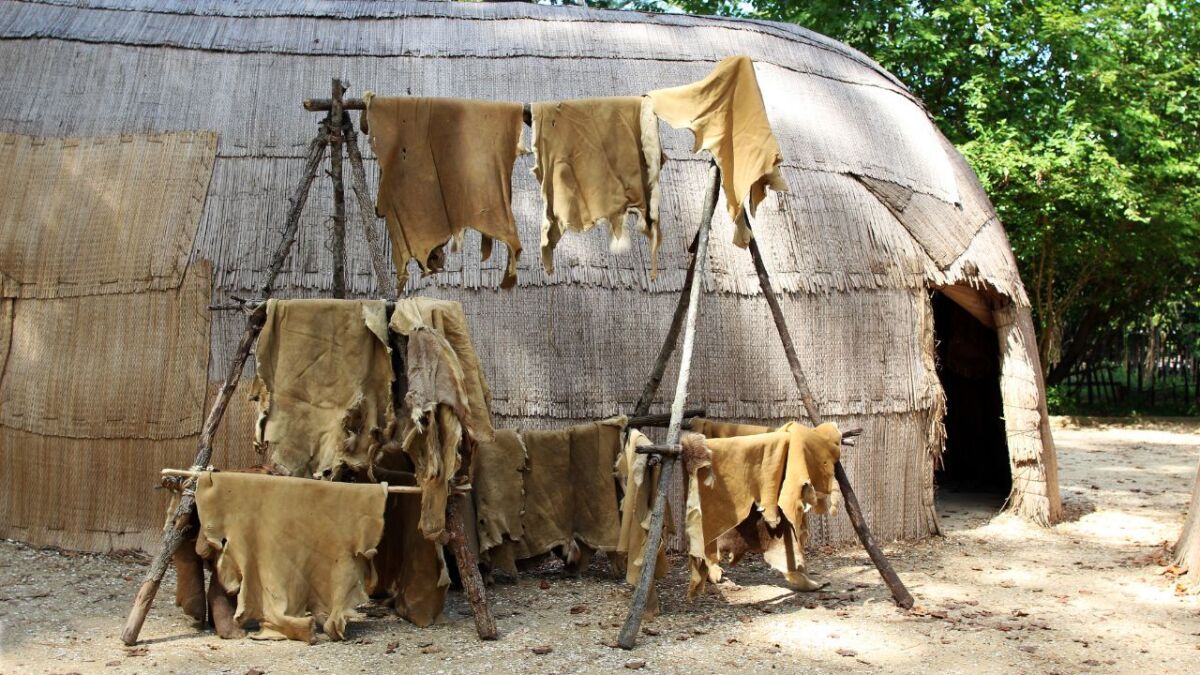
Summary: there are countless ways to boil water without a pot
You need water to live, but drinking contaminated water can quickly become deadly.
Therefore, it is advisable to acquire the necessary skills to be able to boil your water in all situations. Not to mention that you also want to cook your food in it.
Now you have a wide range of methods to bring water to a boil even without a cooking pot.
Some methods require certain resources and others require a certain skill and some practice.
Take your time and see which methods work well for you. This way, you'll be prepared for any situation and know what you can rely on in an emergency.
Have fun tinkering and experimenting.

Sources for the guide
https://www.survivalsullivan.com/how-to-boil-water-without-a-pot/
https://www.wildnistraining-westerwald.de/2020/04/14/wasser-aufbereiten-eine-echte-survivalmethode-f%C3%BCr-den-notfall/
https://de.wikipedia.org/wiki/Breitwegerich
https://survivalfreedom.com/how-to-boil-water-without-a-pot/

Author of the guide
Martin Gebhardt
Hey, I'm Martin. On my blog, you will learn the basics and numerous details about living in the wild. I think survival, bushcraft and the good life in nature are the keys to happiness. Find me here on Instagram or on YouTube. You can find more about my mission on the About Me page.
Was this guide helpful?
26 people found this guide helpful.
5.00 out of 5 points (26 Ratings)
Comments (1)
This post may contain affiliate links. So if you click on the links and make a purchase, I will receive a small commission at no additional cost to you. Click here, to learn more about it.


